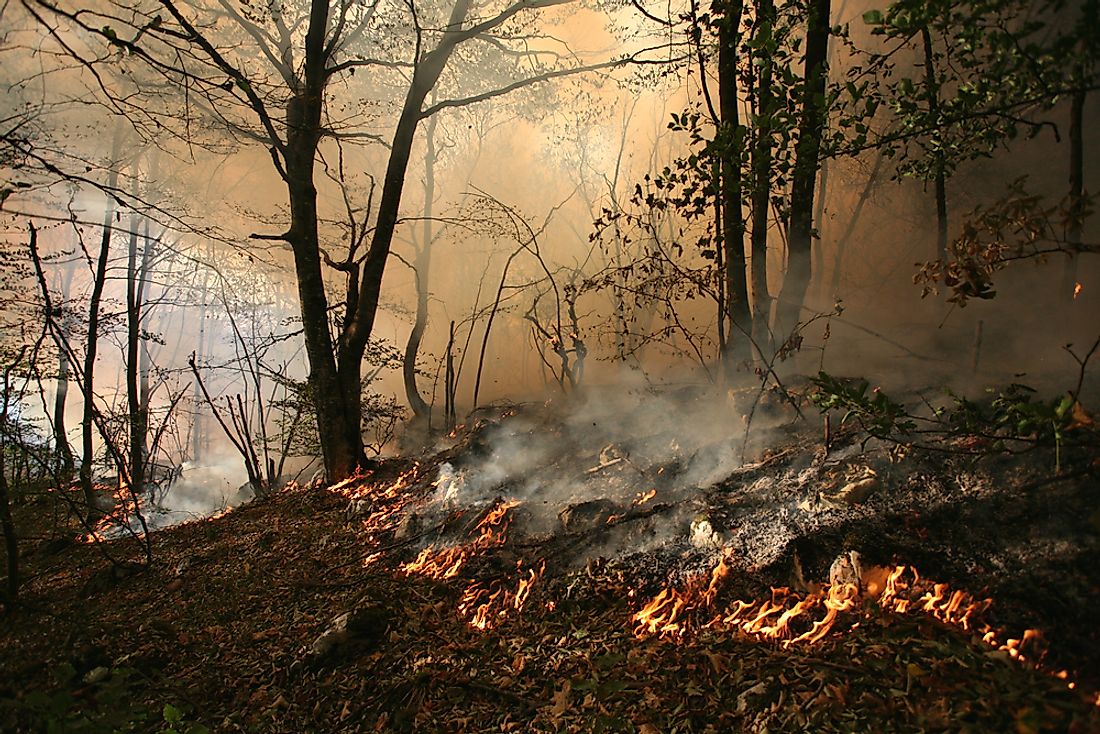What Are The Differences Between A Ground Fire And A Surface Fire?

Most wildfires are monstrous in size, with some of the largest fires consuming hundreds of thousands of acres of forest. In 2013, a wildfire which engulfed the Yosemite National Park dubbed ‘The Rim Fire’ consumed a quarter of a million acres of forest. Wildfires can be classified into four different types based on their fuels which are crown fires, ladder fires, ground fires, and surface fires. Of the four types of wildfires, surface and ground fires are the slowest to spread and typically occur on the forest floor.
Ground Fires and Surface Fires
Ground fires are wildfires that occur in the subsurface and consume buried vegetation. As the name suggests, surface fires are wildfires that occur on the surface, consuming low-lying vegetation. Wildfires can start in the subterranean level as ground fires and gradually grow to form surface fires after breaching to the surface. Additionally, surface fires can, in ideal conditions, grow to consume the forest canopy, a characteristic that is seen in crown fires. However, the surface fires often die out before they develop to a level to be classified as crown fires.
Differences
The two types of fires share common characteristics. For instance, ground and surface fires are both wildfires. However, the two types of fires are primarily differentiated by the type of vegetation that fuels them. Surface fires consume litter such as dried leaves, twigs, and duff. In contrast, ground fires burn buried organic matter including peat and humus. Unlike surface fires which are easily put out, ground fires are tough to contain due to their existence below the surface. Both surface and ground fires spread slowly due to the obstruction of winds by the towering trees, but the spread of surface fires can suddenly increase when burning in an area with steep slopes. The spread of ground fires is comparatively slower and can burn over several months. In some occasions, ground fires can temporarily smolder when temperatures dip such as in winter, only to reignite when conditions become ideal again. While the two types of fires are less destructive compared to crown fires, surface fires generally cause less damage to the forests relative to ground fires.
Extinguishing Ground And Surface Fires
Putting out any kind of wildfire comes with insurmountable challenges. However, crown fires are normally the hardest type of wildfire to contain due to its ability to spread rapidly. Crown fires produce the hottest temperatures of any type of wildfire and huge flames, and the two characteristics make them dangerous. Despite not being as destructive as crown fires, ground fires are also exceptionally hard to contain due to the unpredictability of their spread. Surface fires are the easiest wildfire to extinguish since their spread pattern is predictable.
Causes Of Wildfires
Wildfires are caused due to natural and human foctors. Warm temperatures cause vegetation to dry up and become the perfect ingredient for a wildfire. This fact also explains why wildfires are most probably start during the day since day temperatures are usually higher than those experienced during the night. Global warming is often pointed at as the leading cause of the surge in the number of wildfires recorded in recent years.











